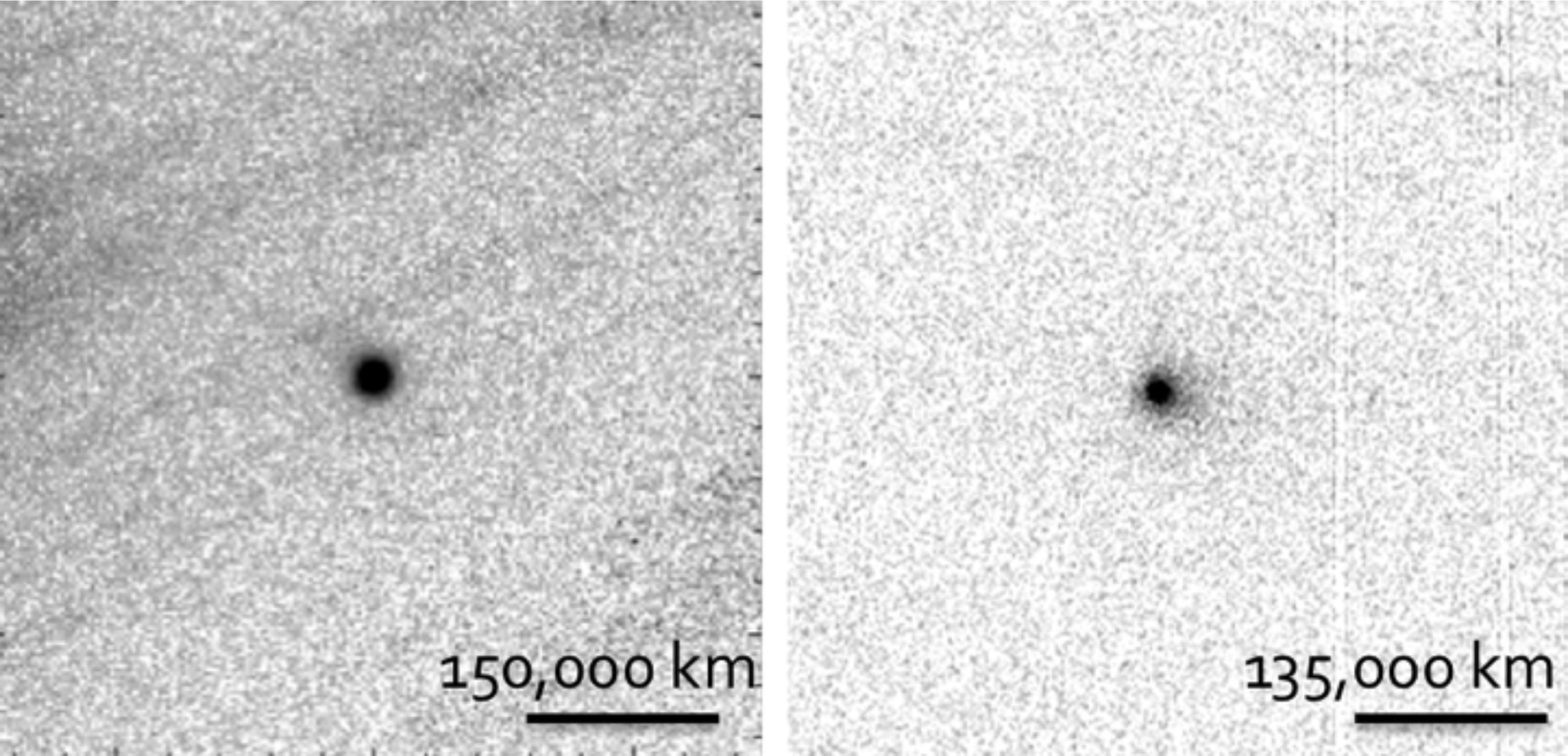What’s a comet that doesn’t look like a comet? The question sounds contradictory, but astronomers believe these objects exist. As comets pass through the solar system, they bleed ice and dust as the Sun’s effects wash over their small bodies. Over time, some of the objects can keep going like ghost ships — just without the ices that used to produce a show.
There already is a class of objects called damocloids that are believed to be extinct comets, but scientists believe they have found something new with two mysterious visitors — what they call “naked” comets — from the outer Solar System.
The two objects originate from an area that astronomers term the Oort Cloud, a hypothetical collection of icy bodies that orbit as far away as 100,000 times the Earth-Sun distance (astronomical unit). Gravitational influences then kick the objects in towards the Sun and they commence orbits that can last millions of years.
When Jan Oort first proposed this concept in the 1950s, he said that some of the objects there could have only a tiny layer of ice that would immediately evaporate during the first pass in near the Sun. That’s what astronomers think they are seeing in objects C/2013 P2 Pan-STARRS and C/2014 S3 Pan-STARRS.

“Objects on long-period orbits like this usually exhibit cometary tails, for example Comet ISON and Comet Hale Bopp, so we immediately knew this object was unusual,” stated Karen Meech, an astronomer at the University of Hawaii at Manoa who led the research. “I wondered if this could be the first evidence of movement of solar system building blocks from the inner solar system to the Oort Cloud.”
The automated Pan STARRS1 survey telescope found C/2013 P2 in August 2013, with astronomers remarking its orbit resembled that of a comet. But, C/2013 P2’s surface was quiet. A second look the next month with the 8-meter Gemini North telescope in Hawaii revealed a little bit of light and a dusty tail. The object stayed at about the same brightness, even when it got to its closest approach to the Sun (2.8 AU) in February 2014.
After the comet swung around the Sun and telescopes could look at it again, examinations with the Gemini North telescope found something weird: the object’s spectrum looked red. This makes it look more like a Kuiper Belt object — something that roams in shallower waters in the Solar System, beyond Neptune’s orbit — than a typical comet or asteroid.
While results were still being analyzed, in September a NASA survey found an object with curiously similar properties: C/2014 S3. When it was found, the object had already passed its closest approach to the Sun in August. But from analyzing the orbit, the scientists saw it had come to only within 2 AU. Also, the first observations showed barely a tail at all.
![Distribution of Kuiper belt objects (green), along with various other outer Solar System bodies, based on data from the Minor Planet Center. [Credit: Minor Planet Center; Murray and Dermott]](https://www.universetoday.com/wp-content/uploads/2014/01/Kuiper_belt.png)
“I’ll be thrilled if this object turns out to have a surface composition similar to asteroids in the inner part of the asteroid belt. If this is the case, it will be remarkable for a body found so far out in the Solar System,” stated Meech.
“There are several models that try to explain how the planets grew in the early Solar System, and some of these predict that material formed close to the sun could have been thrown outward into the outer Solar System and Oort Cloud, where it remains today. Maybe we are finally seeing that evidence.”
Results were presented today (Nov. 10) at the Division of Planetary Sciences meeting of the American Astronomical Society in Tucson, Arizona. A press release did not say if the research is peer-reviewed, or state publication plans.


Interesting that these discoveries dovetail with a recent paper that estimated there are around 8 billion asteroids in the Oort Cloud, more than anywhere else in the solar system:
http://astrobites.org/2014/11/10/most-asteroids-are-not-in-the-asteroid-belt/